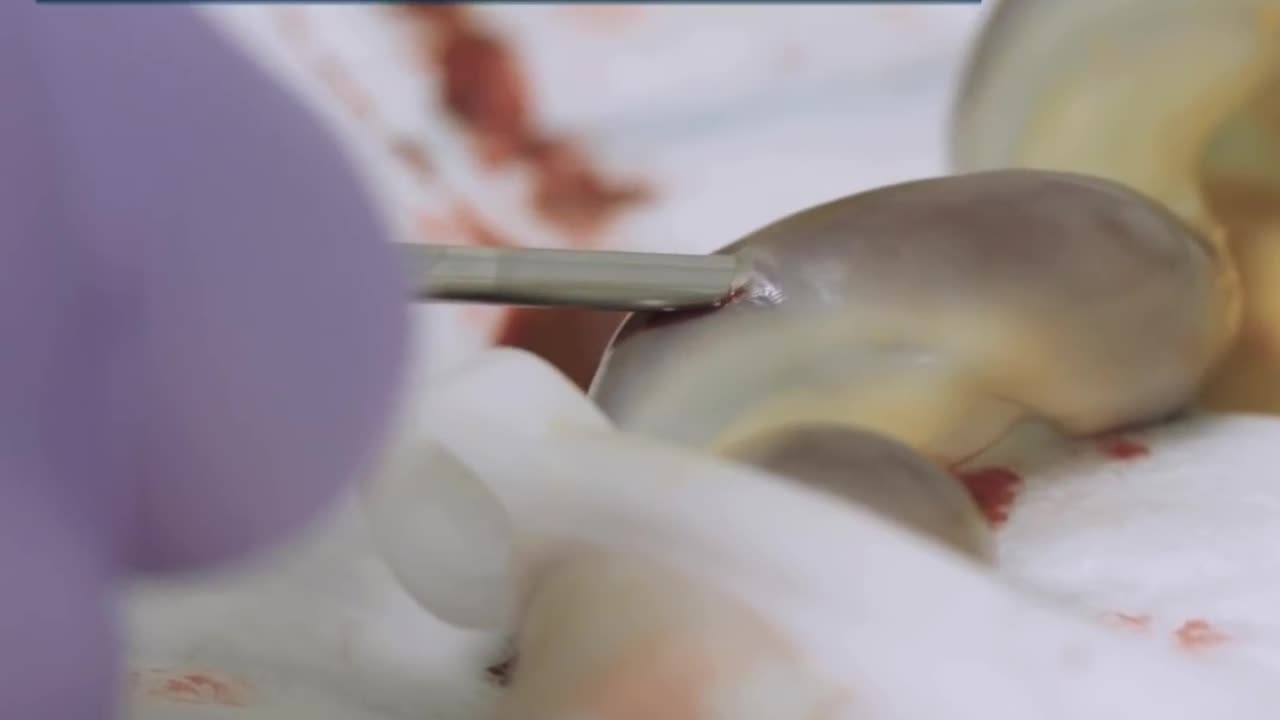Premium Only Content

How umbilical cord blood could save your life
During pregnancy, the umbilical cord links the developing fetus to the uterus. One vein and two arteries transport blood, nutrients and waste products.
Following birth, the cord is usually tied or clamped. It is cut and the cord and placenta are then often disposed of. But cord blood is rich in stem cells that can form new blood cells. These blood-forming stem cells can help treat conditions such as cancers, immune deficiencies and genetic disorders.
With consent, cord blood can be collected after the cord is cut. To extract the cord blood, the placenta is hung from a sterile support. The cord is cleaned and a needle is inserted into a blood vessel and blood flows from the cord into a collection bag. This donation, stored anonymously, can be used to help other children or adults.
Not every donated cord is successful. Each cord must provide a minimum of 60ml of blood to merit long-term storage and tests are used to detect HIV, hepatitis and other infections. Cord blood must also be frozen as soon as possible after collection, so it is transferred to a laboratory for examination and storage.
Cells in cord blood can help replace or rebuild defective bone marrow. Genetic analysis of cord blood tests for proteins called human leukocyte antigens (HLA). This determines the donor’s tissue type and matches HLA protein tags between donor and recipient. People of certain ethnicities can struggle to find a donor with matching tissue type, so cord blood banks are actively looking for more donors from these ethnic groups.
In the UK, the National Health Service collects cord blood from six maternity hospitals: Barnet General Hospital; Northwick Park Hospital; Luton and Dunstable Hospital; Watford General Hospital; St George's Hospital, London and University College Hospital, London. The Anthony Nolan cancer charity collects from another four: Saint Mary's, Manchester; King's College Hospital, London; Leicester Royal Infirmary and Leicester General Hospital.
These cord blood banks combined have collected more than 21,000 units of cord blood. They are aiming for a total of 30,000 by the end of 2018.
-
 LIVE
LIVE
Tucker Carlson
24 minutes agoMatt Walsh: Any country that can’t function without American aid has no right to exist.
3,289 watching -
 LIVE
LIVE
The Jimmy Dore Show
33 minutes agoTrump BLASTS ABC Over Biden Coverup! Senator Calls Jews “Masters of the Universe!” w/Dane Wigington
4,411 watching -
 DVR
DVR
Kim Iversen
2 hours agoPutin's ONLY Option To End The War Is TOTAL TAKEOVER Of Ukraine | Scott Horton
2.66K8 -
 LIVE
LIVE
Dr Disrespect
7 hours ago🔴LIVE - DR DISRESPECT - WARZONE NUKE - WILL IT EXPLODE?
2,292 watching -
 LIVE
LIVE
Barry Cunningham
2 hours agoWATCH LIVE: PRESIDENT TRUMP SPEECH ON INVESTING IN AMERICA!
805 watching -
 LIVE
LIVE
StoneMountain64
5 hours ago1st stream BACK! Arc Raiders BRAND new exclusive alpha early look
429 watching -

Exploring With Nug
8 hours agoVanished After Driving Away… I Spent the Day Searching Lakes
151 -
 LIVE
LIVE
CatfishedOnline
6 hours agoMan Goes Missing After Romance Scammer Reveals Herself!
84 watching -
 LIVE
LIVE
Dr. Drew
4 hours agoBREAKING: DOJ Investigating Medical Journals For Fraud; Publishers Call Letters "Harassment" w/ Elijah Schaffer & Dr. Ram Yogendra – Ask Dr. Drew
490 watching -
 1:15:45
1:15:45
Redacted News
2 hours agoBREAKING! RFK JR. EXPOSES TRUTH BEHIND CHEM TRAILS AND CHILD TRAFFICKING AT HHS | REDACTED NEWS
85.4K111